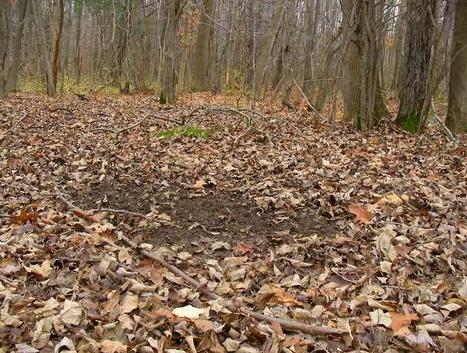Hunting Deer Scrapes
As with any hunting technique, hunting over deer scrapes or mock scrapes can be a controversial topic. The reality is, while your dream buck is likely congregating at these communal spots, they are doing so mostly during the nighttime hours. This isn't to say that you shouldn't be hunting over scrapes, it simply means that there are more beneficial uses for scrapes when you hunt.
Mock Scrape vs Deer Scrape
Before you can create a mock scrape to aid in your hunt, you will need to understand what a real deer scrape is. Deer scrapes are a common area where a deer will scrape up the ground and rub their pre-orbital gland up against a branch that hangs above the scrape. They use these areas as a means of communication. While some scrapes are very large and located in areas with higher deer traffic, others are much smaller with less deer traffic. Often the smaller scrapes are created by a frustrated buck. A vital part of any scrape is the licking branch. The branch is used to leave unique markers by the deer and aides in their communicating efforts. Other characteristics of a scrape include exposed soil and urine saturation.

When you create a mock scrape you will need to entice the passing deer to use it as their own. The first act to accomplish that is creating the mock scrape in a natural location, usually in high-traffic areas, near food and water sources, and close to bedding areas. The second step would be to find a good licking branch. This can't just be any old branch; it needs to be alone and stick out enough to grab the attention of the deer. It will also need to be 45-60 inches off the ground. If it is too high or too low, it does not serve its purpose. The licking stick is meant for the deer to deposit their scent but if they have to bend down, they won't use it. The same thing is true when the licking stick is too high and can't be reached by the deer even when they stand on their hind legs. Make sure you are raking away grass, leaves, and debris from under the licking branch to expose the soil, preferably around 2 feet wide by 2 1/2 feet tall. The smell of freshly scraped dirt will attract the deer way before they even see the scrape. The final step, which is optional, would be depositing scent. Usually, hunters will use buck or doe urine, but if you don't have any handy, urinating on it yourself will work just as well!
Best Use of Scrapes
Now that you know what a deer scrape is and what it is used for, let's talk about the best ways to implement them in your hunt. Because deer use the scrapes mostly at night, they do not make the best hunting location. However, if you hunt near a scrape that is also close to their bedding area, you may be able to cross paths with a buck on his way to or from the scrape.
I have found that scrape sites are the best place to take inventory of the deer I have in my area. Setting up a trail camera or two will allow me to see the deer in action and get a better idea of their traveling patterns. Deer use scrapes all year long, it is easy to monitor them throughout the year so that you have the best intel on their day-to-day activities. So, while you are not guaranteed a deer just because you hunt at a scrape, they do play an essential part in learning about the deer in your area so you can make informed decisions about your season.